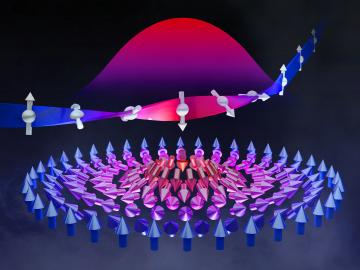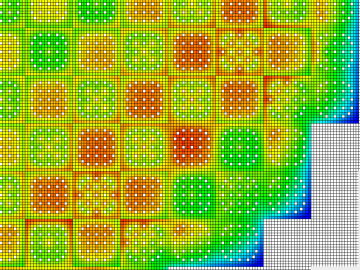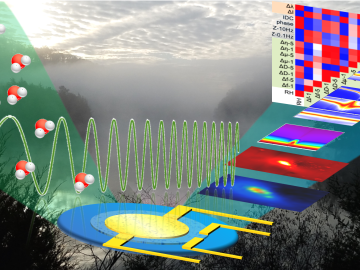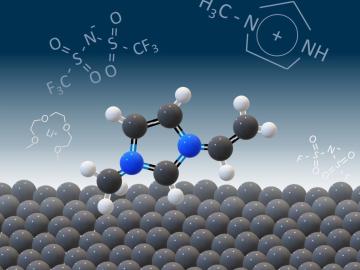
Filter News
Area of Research
- (-) Energy Science (40)
- (-) Materials (47)
- (-) Nuclear Science and Technology (12)
- Advanced Manufacturing (1)
- Biology and Environment (8)
- Computer Science (2)
- Energy Frontier Research Centers (1)
- Fusion and Fission (2)
- Fusion Energy (4)
- Materials for Computing (5)
- National Security (7)
- Neutron Science (16)
- Nuclear Systems Modeling, Simulation and Validation (1)
- Quantum information Science (1)
- Supercomputing (28)
News Topics
- (-) Advanced Reactors (9)
- (-) Artificial Intelligence (4)
- (-) Chemical Sciences (2)
- (-) Clean Water (1)
- (-) Grid (10)
- (-) Materials Science (40)
- (-) Molten Salt (5)
- (-) Nanotechnology (19)
- (-) Summit (5)
- (-) Transportation (17)
- 3-D Printing/Advanced Manufacturing (27)
- Big Data (4)
- Bioenergy (12)
- Biology (2)
- Biomedical (7)
- Biotechnology (1)
- Composites (3)
- Computer Science (19)
- Coronavirus (9)
- Critical Materials (2)
- Cybersecurity (4)
- Energy Storage (20)
- Environment (21)
- Exascale Computing (2)
- Fusion (7)
- High-Performance Computing (1)
- Isotopes (9)
- Machine Learning (6)
- Materials (2)
- Mathematics (2)
- Mercury (1)
- Microscopy (10)
- National Security (1)
- Neutron Science (19)
- Nuclear Energy (26)
- Physics (12)
- Polymers (9)
- Quantum Science (5)
- Security (3)
- Space Exploration (4)
Media Contacts

Oak Ridge National Laboratory scientists have discovered a cost-effective way to significantly improve the mechanical performance of common polymer nanocomposite materials.

Scientists discovered a strategy for layering dissimilar crystals with atomic precision to control the size of resulting magnetic quasi-particles called skyrmions.

A team led by Oak Ridge National Laboratory developed a novel, integrated approach to track energy-transporting ions within an ultra-thin material, which could unlock its energy storage potential leading toward faster charging, longer-lasting devices.

As CASL ends and transitions to VERA Users Group, ORNL looks at the history of the program and its impact on the nuclear industry.

Oak Ridge National Laboratory researchers have developed artificial intelligence software for powder bed 3D printers that assesses the quality of parts in real time, without the need for expensive characterization equipment.

Oak Ridge National Laboratory researchers have developed a machine learning model that could help predict the impact pandemics such as COVID-19 have on fuel demand in the United States.

An all-in-one experimental platform developed at Oak Ridge National Laboratory’s Center for Nanophase Materials Sciences accelerates research on promising materials for future technologies.

Real-time measurements captured by researchers at ORNL provide missing insight into chemical separations to recover cobalt, a critical raw material used to make batteries and magnets for modern technologies.

Scientists seeking ways to improve a battery’s ability to hold a charge longer, using advanced materials that are safe, stable and efficient, have determined that the materials themselves are only part of the solution.

ORNL researchers have developed an intelligent power electronic inverter platform that can connect locally sited energy resources such as solar panels, energy storage and electric vehicles and smoothly interact with the utility power grid.


